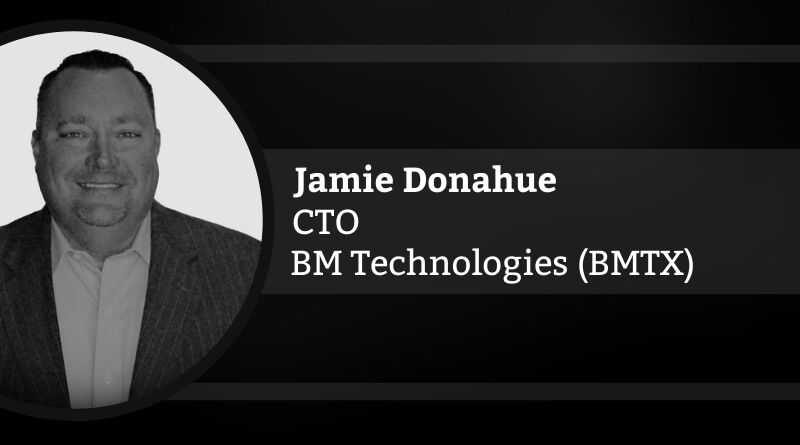The Power in our Banking-as-a-Service (BaaS) Platform
By Jamie Donahue, Chief Technology Officer, BM Technologies (BMTX)
BMTX is a digital banking platform that employs a multi-partner distribution model, known as “Banking-as-a-Service” (BaaS), that enables the acquisition of customers at higher volumes and substantially lower expenditures than traditional banks, while providing significant benefits to its customers, partners, and business. Today, we have more than two million account holders. Our mission is to utilize technology to create a better banking experience for millions of Americans that is more affordable, transparent, and consumer-friendly. We have a unique way of delivering our banking services where we work with partners to be able to access new account holders. For example, we work with approximately 750 campuses across the country, which enables us to offer banking services to one in every three college-bound students. Through BMTX’s proprietary API-driven banking as a service platform and white label interface, BMTX is able to help FinTechs and brands launch fully branded financial services products to their customers and employees at a fraction of the cost and time it would take on their own. BMTX’s offering provides a strong point of differentiation that leads to attracting new customers, building greater customer loyalty, adding new revenue streams, and accessing data to provide an even more personalized experience to their customers. BMTX’s BaaS technology helps to improve people’s lives by empowering them financially with a banking platform that has low or no fees.
In a highly competitive marketplace, offering “an app that does banking” is no longer a differentiator in our industry. We have transformed our monolithic systems into a flexible platform to adopt a microservice-first integration model with our clients and partners. Today, we are in the market with an industry leading platform that can be a standalone app, but also can present an Application Programming Interface (API), or if needed, ingest API traffic from our clients and or partners. We believe this powerful flexibility in our platform and our years of running our BaaS business distinguishes BMTX in a highly competitive industry.
For BMTX, integration is all about connecting disparate functions from other platforms and ecosystems via microservices in a workflow at a cloud scale. This business integration must be seamless to the partner, client, and most importantly, the end-user. Our goal is to integrate our deep banking functionality and expertise with our end consumer. We are achieving this through a microservice architecture. Microservice applications are composed of small, independent, and scalable customer-focused services that communicate with each other using standard protocols with well-defined interfaces. They are, in essence, an independently deployable unit of code that is the opposite of the traditional massive and complex approach to integration. Azure Microservices uses Azure Service Fabric as its platform to utilize infrastructure resources efficiently and solve business problems using a team microservices approach.
As part of our overall transformation solution, microservices addressed the complex distributed systems problems such as reliability, scalability, management, and latency so that the company could focus on building applications and business logic. Our microservices approach to architecture also created a modular application in which each part is loosely coupled to the others. This method makes it easier for BMTX to implement continuous delivery because new versions of each service can be deployed independently. Also, we can create small, autonomous teams of developers for each microservice. This division fits well with our modern agile practices.
With Azure Microservices, BMTX can easily manage new feature releases, updates, and bug fixes in individual components without redeploying the entire application. It can automate software delivery workflow with a continuous integration/continuous deployment (CI/CD) pipeline like GitHub Actions. We are also able to scale with demand and our individual services and subsystems based on resource needs without scaling out the entire application. We can include a higher density of services within a single host using a container orchestrator like Azure Kubernetes Service (AKS) or Azure Red Hat OpenShift. Additionally, we can replace or retire individual services without affecting the entire application. Unlike the traditional monolithic application models, microservices platforms use patterns such as circuit breaking to tolerate individual service failure and improve security and reliability.
Technology continues to evolve rapidly, and as companies scale, it is essential to consider all the platforms and ecosystems involved in the workflow, and how the sum of these parts can seamlessly come together to create the best applications and product interfaces for the end-user.

